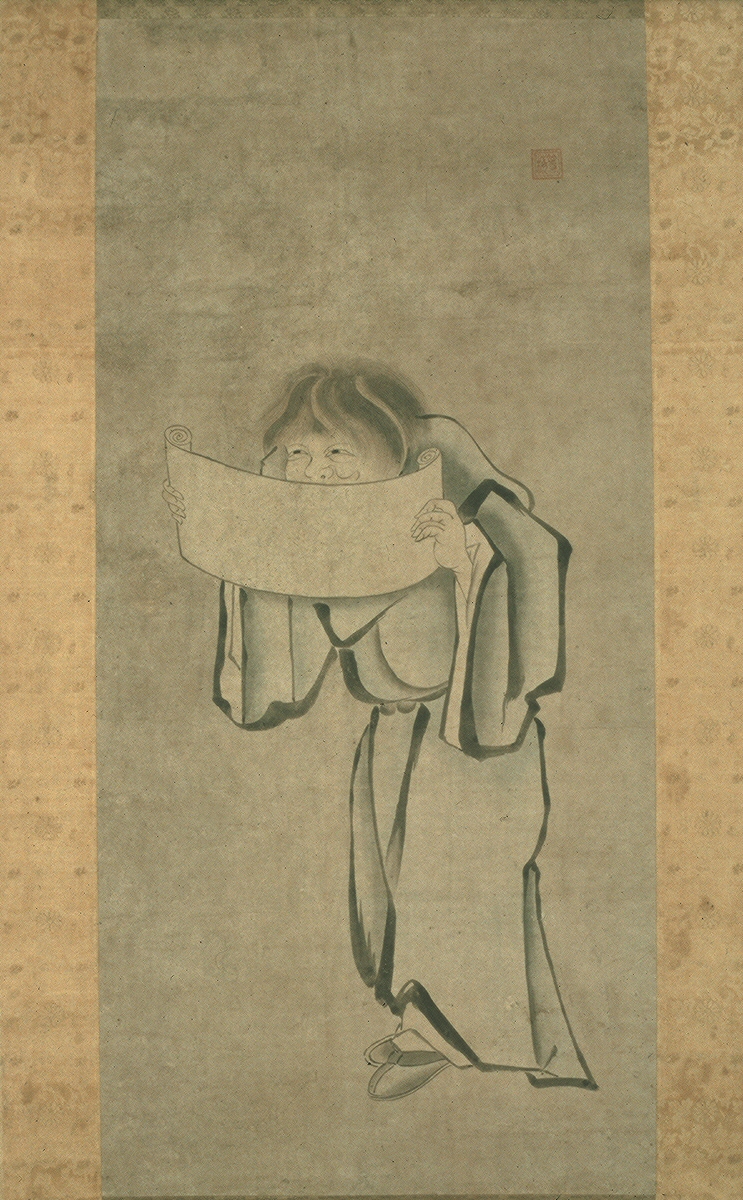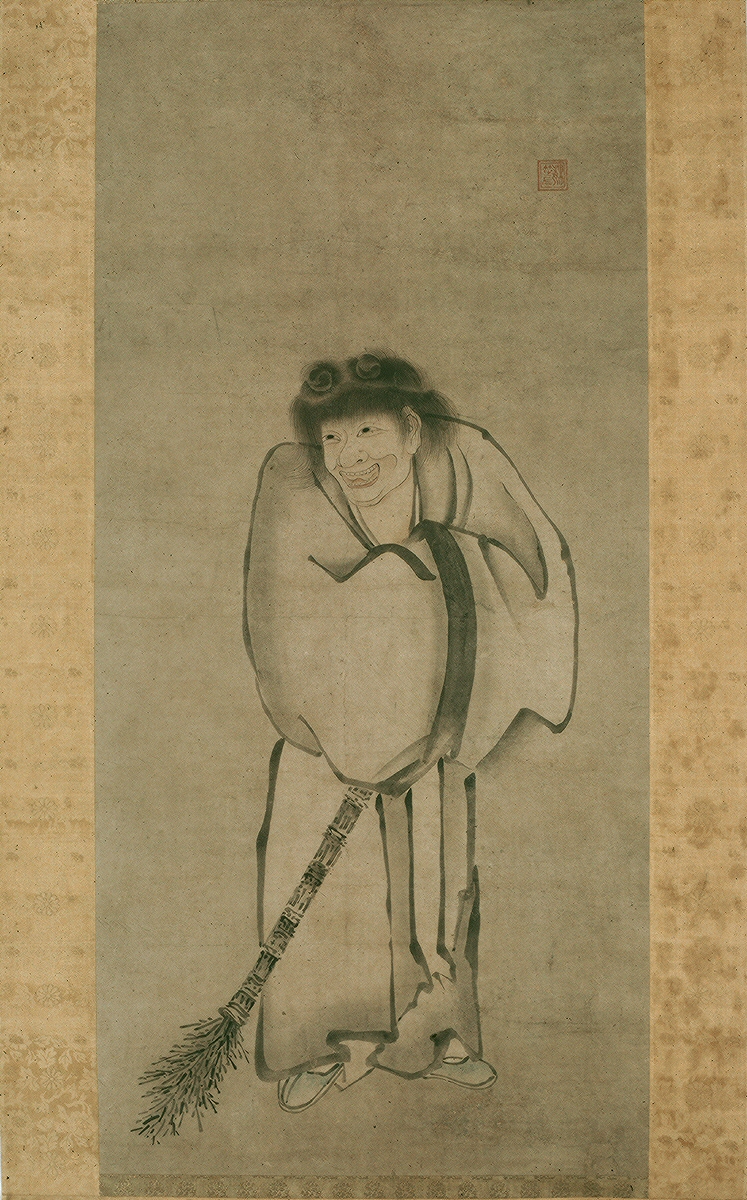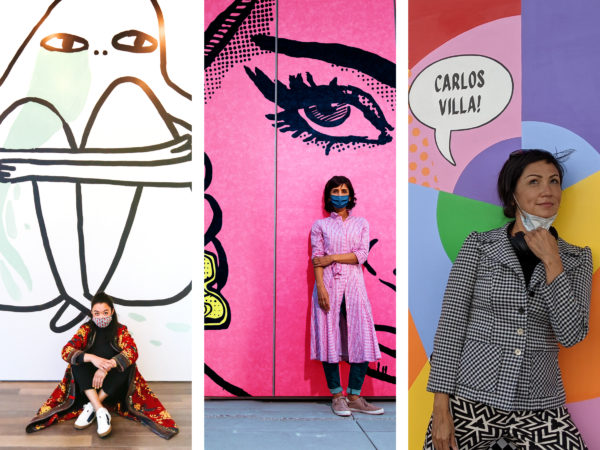Activity
Kanzan (Hanshan) and Jittoku (Shide), approx. 1500-1625

Kanzan (Hanshan) and Jittoku (Shide), approx. 1500-1625
This pair of scrolls represents two semi-legendary Chinese figures frequently portrayed in Japanese ink paintings associated with Zen Buddhism. Kanzan (Chinese: Hanshan) was a eccentric poet of the Tang dynasty (618-906) who befriended Jittoku (Chinese: Shide), a kitchen helper at a mountain temple. They both lived on leftover food from the temple’s kitchen. As in these paintings, Kanzan is usually depicted holding a scroll, perhaps of his poetry or of Taoist wisdom; Jittoku holds a kitchen broom. Both have slightly unkempt appearances and carefree, laughing expressions.
Zen, a meditative school of Buddhism, originated in India and was transmitted to Japan through China in the late twelfth century. In the Muromachi period, when these paintings were made, the happy-go-lucky figures of Kanzan and Jittoku were sometimes regarded among Zen practitioners as incarnations of the bodhisattvas Manjushri (Japanese: Monju) and Samantabadhra (Japanese: Fugen).
The artist Tobai is believed to have been an ink painter from present-day Fukuoka prefecture who studied with Sesshu (1420-approx. 1506). The brushwork on the garments and broom are in the style of Sesshu. Some scholars have argued that Tobai was instead a painter of the Unkoku school active in the late 1500s or early 1600s. In either case, surviving works by this artist are rare.
Before entering the Brundage collection, these two scrolls were once owned by Hara Yoshimichi (1867-1944), an eminent Japanese statesman and the last commoner to be granted (posthumously) the aristocratic title of Imperial Baron.








